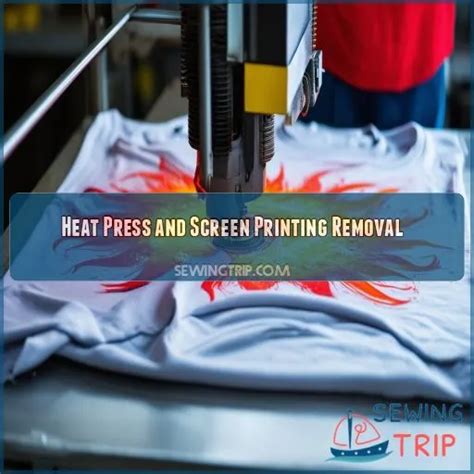Screenprint Removal: Achieve a Professional Finish
Removing screen prints, whether from clothing, glass, or other surfaces, can be a surprisingly challenging task. The effectiveness of your removal method depends heavily on the type of ink used, the material the print is on, and the age of the print itself. This guide provides a comprehensive overview of various techniques, ensuring you achieve a professional, residue-free finish.
What Type of Screen Print Are You Removing?
Before diving into removal methods, it's crucial to identify the type of screen print you're dealing with. Different inks react differently to various cleaning agents. Plastisol inks, common for t-shirts, are thick and durable; water-based inks are more delicate. Knowing this beforehand is critical for choosing the appropriate technique. Consider the following factors:
- Ink Type: Plastisol, water-based, discharge, or other specialty inks.
- Substrate Material: Fabric (cotton, polyester, blends), glass, metal, plastic, etc.
- Age of the Print: Newer prints are often easier to remove than older, set inks.
Effective Screen Print Removal Methods
1. Heat & Scraping (For Plastisol Inks on Fabric):
This method is effective for plastisol inks on fabrics like cotton and blends. The heat softens the ink, making it easier to scrape away.
- How to: Apply heat with a hairdryer or heat gun (low setting to avoid damage). Once the ink feels softened, gently scrape with a plastic scraper or dull knife, working slowly to avoid damaging the fabric. A safety razor blade can be used cautiously for stubborn areas, but be extremely careful. After scraping, wash the garment thoroughly.
Important Note: Always test a small, inconspicuous area first to check for fabric damage.
2. Chemical Solvents (For Various Inks and Surfaces):
Various chemical solvents can effectively remove screen prints, but caution is paramount. Always test in an inconspicuous area and work in a well-ventilated space, wearing gloves and eye protection.
-
Suitable Solvents: Isopropyl alcohol (rubbing alcohol), acetone (nail polish remover – use cautiously!), and specialized ink removers are options, though their effectiveness varies based on the ink type. Always check the product label for compatibility with your substrate.
-
How to: Apply the solvent to the screen print using a cotton swab or cloth, allowing it to sit for a few minutes to penetrate the ink. Gently scrub the area, then wipe clean. Multiple applications may be necessary.
Warning: Some solvents can damage certain fabrics or surfaces. Always test first and follow manufacturer instructions carefully.
3. Laundry Detergent & Washing Machine (For Water-Based Inks):
Water-based inks are generally more susceptible to removal through standard laundry methods.
- How to: Pre-treat the garment with a stain remover specifically designed for ink. Wash the garment in hot water (check fabric care label) with a high-quality laundry detergent. Repeat the process if necessary.
4. Commercial Screen Print Removers:
Specialized commercial screen print removers are available from various suppliers. These are formulated for specific ink types and surfaces and often provide the most effective results. However, always read and follow the manufacturer's instructions meticulously.
Addressing Specific Questions:
How do I remove screen printing ink from my clothes?
The method for removing screen printing ink from clothing depends heavily on the type of ink (plastisol, water-based, etc.) and fabric type. The approaches outlined above – heat & scraping, chemical solvents, or laundry detergent – provide a starting point. Always test any method on a hidden area first.
What is the best way to remove screen printing ink from glass?
For glass surfaces, isopropyl alcohol or a specialized glass cleaner is usually effective. Apply the cleaner, allow it to sit for a short time, then gently scrub with a non-abrasive cloth or sponge. Stubborn prints may require more aggressive scrubbing or repeated applications.
Can I remove screen printing ink from metal?
Removing screen printing ink from metal often requires more aggressive methods. Depending on the type of metal and the ink, solvents like acetone may be effective, though careful application and protection are essential. For delicate or antique metals, it’s advisable to consult a professional.
Achieving a Professional Finish:
Regardless of the method used, attention to detail is crucial for a professional finish. Thoroughly clean the area after removing the ink, paying attention to any residual residue. For fabrics, ensure the garment is completely rinsed and dried to prevent any staining. On smooth surfaces, a final wipe with a clean cloth will leave a spotless result. Remember always to prioritize safety and test your chosen method in an inconspicuous area before proceeding. By following these guidelines, you can achieve a professional-looking finish, removing screen prints effectively and safely.

